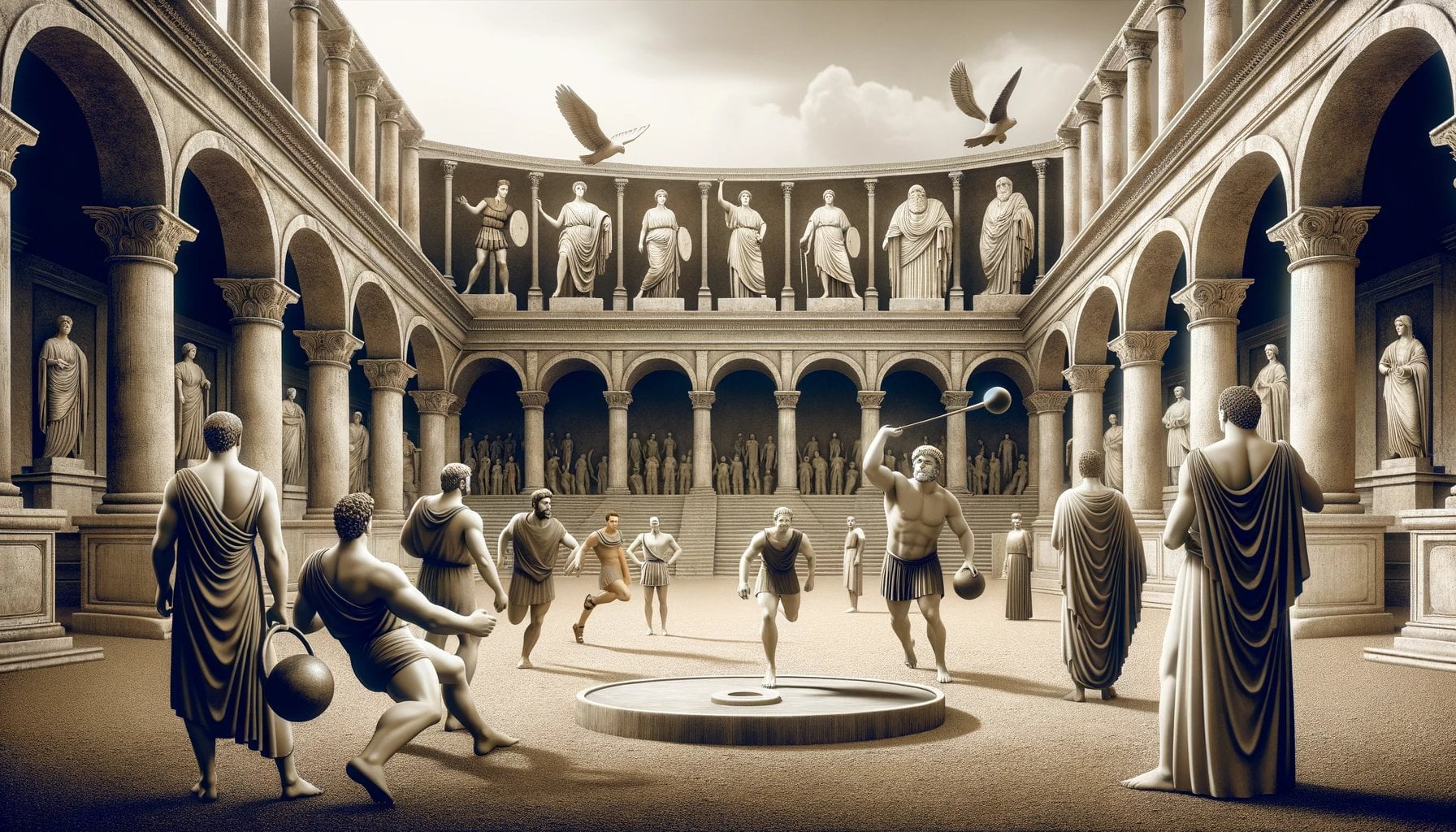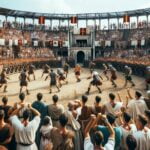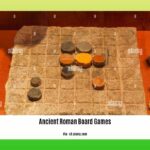Unveiling Ancient Roman Sports: Reliving an Athletic Heritage. Step back in time and immerse yourself in the captivating world of ancient Roman sports, where athletic prowess and competition were revered. As we delve into the customs and rites of this bygone era, we will explore the diverse range of athletic competitions and games that shaped Roman culture. With a deep understanding of this remarkable civilization’s rich heritage and a passion for sports, we will uncover hidden details and shed light on the significance and impact of ancient Roman sports on society. Join us on this journey through time as we rediscover the athletic legacy of ancient Rome.
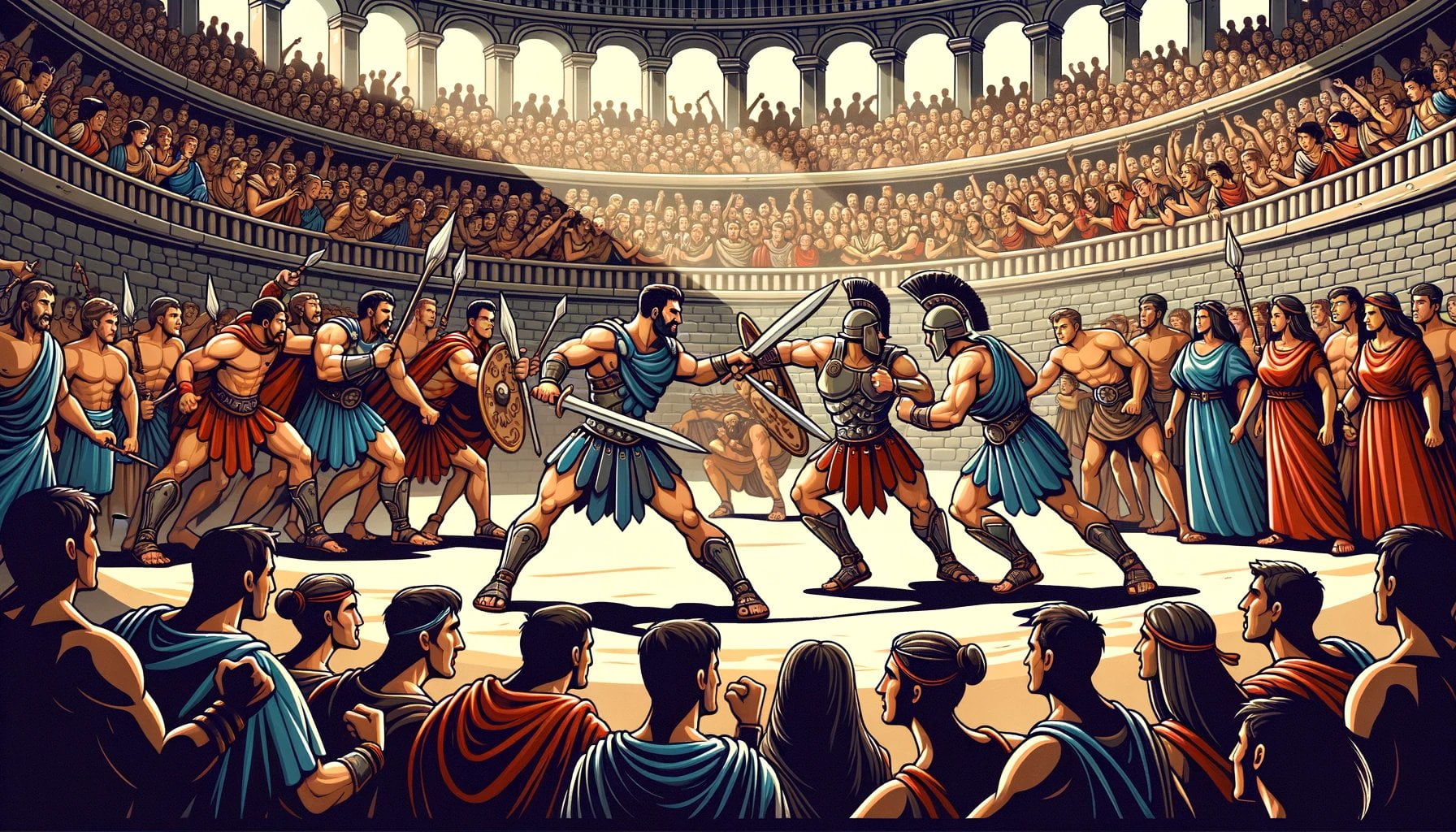
Key Takeaways:
- Ancient Roman sports were highly popular and played a significant role in Roman culture, providing entertainment and showcasing physical prowess.
- Chariot racing was the most thrilling sport, taking place in massive stadiums like the Circus Maximus and attracting fervent fans and intense betting.
- Gladiator fighting was one of the bloodiest and most controversial Roman sports, symbolizing the epitome of ancient Roman sports.
- Roman boxing, known as Pugilatus, captivated the Roman audience with its wild display of physical strength and endurance.
- Peaceful games like hoop rolling and the Roman ball game provided a balance to the more intense and brutal sports.
- Roman sports also included activities such as board games, dice games, and hunting/fishing, showcasing a diverse athletic culture.
- Ancient Roman sports offer insight into the values and passions of one of the most powerful civilizations in history.
Ancient Roman Sports: A Glimpse into the Athletic Culture
One of the most captivating aspects of ancient Roman culture was their deep passion for sports and athletic competitions. These activities not only provided entertainment for the Romans, but they also served as a means to showcase their physical prowess and attain social status. In this article, we will delve into some of the most popular sports and games played by the ancient Romans.
Chariot Racing: The Thrilling Spectacle
Chariot racing stood as the undisputed highlight among ancient Roman sports. Inspired by the chariot races of ancient Greece, this sport became a main event in the ancient Olympics and other Pan-Hellenic Games. Taking place in massive stadiums like the Circus Maximus, chariot racing attracted fervent fans and intense betting. The sheer speed, exhilaration, and skilled athletes involved made it a true spectacle of ancient Roman sports.
Gladiator Fighting: Blood and Spectacle
Among the most controversial and bloodiest Roman sports were the gladiator fights. These combatants, armed to the teeth, captivated the audience with their brutal battles against other gladiators or even wild beasts. Despite the restrictions in place, these fights often resulted in fatalities, transforming the arena into a spectacle of violence and entertainment. Over time, gladiatorial combat became synonymous with ancient Roman sports and continues to be ingrained in popular culture today.
Roman Boxing: A Wild Display of Strength
Another immensely popular sport in ancient Rome was boxing, known as Pugilatus. However, the rules of boxing in ancient Rome were vastly different from the modern-day sport. Participants were allowed to strike any part of the body, even targeting the back and genitals. This wild display of physical strength and endurance captivated the Roman audience and showcased the intense nature of their sporting culture.
Peaceful Games: Hoop Rolling and Roman Ball Game
Contrary to the bloodshed and violence often associated with ancient Roman sports, there were also peaceful games enjoyed primarily by children. Hoop rolling, for example, tested participants’ coordination and agility as they rolled a hoop with a stick. Another game, called Harpastum, resembled a ball game similar to modern-day soccer or handball. These games provided a refreshing balance to the more intense and brutal sports of the time.
Diversity in Roman Sports
While gladiatorial combat takes center stage when discussing ancient Roman sports, it’s essential to note that the Roman sporting world was quite diverse. In addition to the well-known events, the Romans engaged in activities such as board games, dice games, hunting, and fishing to showcase their skills, wealth, and courage. These leisurely pursuits contributed to a well-rounded athletic culture that extended beyond the violence of gladiator fights.
In conclusion, ancient Roman sports played a crucial role in Roman society and offered a wide range of athletic activities. From the thrilling chariot races to the brutal gladiator fights, the Romans demonstrated their physical prowess and entertained their audiences. Additionally, peaceful games and leisurely pursuits showcased a more lighthearted side of their sporting culture. Through these ancient sports, we gain insight into the values and passions of one of the most powerful civilizations in history.
Ancient Roman sarcophagi were intricately designed burial containers that held the remains of important individuals. Explore a wide range of these remarkable artifacts and delve into their historical significance by clicking here.
Immerse yourself in the captivating sounds of music in ancient Rome. Discover the fascinating melodies and rhythms that were instrumental in ancient Roman culture by clicking here.
Step into the world of ancient Roman temples and witness the grandeur and architectural marvels of these sacred structures. Click here to explore the stunning temples that played a central role in Roman religious practices.
The Role of Sports in Ancient Roman Society
In ancient Rome, sports played a crucial role in society, shaping cultural values and reflecting the ideals of the Roman people. The Romans admired physical prowess and sought to entertain and captivate the masses through a variety of athletic competitions and games. The significance of sports in ancient Roman society can be unraveled by exploring how they served as a platform for displaying virtues, symbolized social status, and provided a form of entertainment for the spectators.
Display of Virtues
Sports in ancient Rome were not merely competitions but also a way to showcase and reinforce the values and virtues that were highly regarded by the Roman culture. The athletes themselves embodied these qualities and became cultural icons. Key virtues demonstrated through sports included bravery, strength, endurance, and social class[^1^].
Symbol of Social Status
Wealthy Romans sought to solidify their social standing by constructing special sports facilities within their villas. These facilities, such as gymnasiums and palaestrae, were grand structures that represented the owner’s social status in Roman society[^2^]. Having these sports facilities in their homes served as a visible symbol of their wealth and power.
Entertainment for the Masses
While the Greeks viewed sports as a means of moral elevation and glory for the athletes, the Romans transformed them into a spectacle of blood and violence for the entertainment of the spectators[^3^]. The Roman concept of sport centered around providing thrilling and often brutal spectacles that appealed to the masses. The sports played in the Roman Colosseum, such as gladiator fights and chariot races, captivated audiences with their intensity and became popular forms of entertainment[^1^].
Key Takeaways:
- Sports in ancient Rome were not only meant for entertainment but also symbolized and reinforced cultural values and virtues.
- Wealthy Romans used sports facilities in their villas to display their social status and elevate their standing in society.
- The Romans transformed Greek sports into spectacles of blood and violence to entertain the masses.
- Ancient Roman sports, such as gladiator fights and chariot races, were popular forms of entertainment that captivated the audience.[^1^][^2^][^3^]
Sources:
^1^ thefactsite.com – Roman Sports
^2^ legendsandchronicles.com – Sports and Games of the Colosseum
^3^ bartleby.com – The Roman Spirit in Religious, Civil and Domestic Life
Famous Athletes and Sporting Events in Ancient Rome
Ancient Rome: a civilization known for its grandeur, its achievements, and its passion for sports. From the pulse-pounding excitement of chariot racing to the fierce battles of gladiators in the arena, Roman sports were a spectacle that captivated both the participants and the audience. Today, we delve into this vibrant world to uncover the famous athletes and sporting events that left an indelible mark on ancient Roman society.
Chariot Racing: The Heartbeat of Ancient Rome
Inspired by its Greek origins, chariot racing took center stage as one of the most popular and thrilling sports in ancient Rome. Massive stadiums like the renowned Circus Maximus bore witness to the thunderous hooves and the heart-stopping clashes between charioteers. The chariot races were a cornerstone of entertainment, attracting immense crowds who cheered passionately for their favorite teams. The skill and bravery of famous charioteers, such as Scorpus and Gaius Appuleius Diocles, were celebrated and immortalized in the annals of sports history. The adrenaline-infused moments and the euphoric atmosphere made chariot racing an unforgettable sporting event in ancient Rome.
Gladiators: The Heroic Warriors of the Arena
In contrast to the exhilarating speed of chariot racing, gladiator fights offered a bloodier but no less captivating form of entertainment. Gladiators, armed combatants who faced off against one another in fierce battles, embodied the epitome of Roman bravery and skill. These warriors, such as the legendary Spartacus, endured grueling training and displayed incredible strength and endurance in the arena. The spectacle of gladiator fights fascinated and enthralled the Roman populace, making it one of the most talked-about sporting events of the time, despite its controversial nature.
Pugilatus: The Art of Roman Boxing
Roman boxing, also known as Pugilatus, emerged as a popular sport in ancient Rome. It differed from modern-day boxing, allowing strikes to any part of the body. This brutal form of combat showcased the physical strength, agility, and endurance of the boxers. Influenced by the Greeks and Etruscans, the renowned sport was not only a test of physical prowess but also a display of intense discipline and strategic boxing techniques. The famous Greek pugilist Theagenes of Thasos, who achieved an astounding 1,300 victories in his 22-year career, exemplified the heights that Roman boxers aspired to reach.
Harpastum and Hoop Rolling: Balancing Act Between Sports
While chariot racing, gladiator fights, and boxing dominated the sports scene in ancient Rome, there were also peaceful games that provided a balance to the intensity of these events. Harpastum, a form of ball game akin to modern-day rugby, allowed players to engage in friendly competition and demonstrate their agility and teamwork. On the other hand, hoop rolling was a simple yet enjoyable sport predominantly cherished by children. As they guided their hoops through the streets of ancient Rome, laughter and joy filled the air, offering a refreshing respite from the thunderous applause and the pulsating energy of larger sporting events.
Unveiling the Significance of Ancient Roman Sports
Sport played a vital role in ancient Roman society, serving as more than just a form of entertainment. It became a platform for displaying virtues such as bravery, strength, endurance, and social class. Wealthy Romans, seeking to showcase their status, constructed sports facilities within their villas. Through spectacles of blood and violence like gladiator fights and chariot races, the Romans sought to entertain and awe their audiences, further highlighting their dominance and power.
Key Takeaways:
- Chariot racing was a popular and heart-pounding sport in ancient Rome, taking place in colossal stadiums like the Circus Maximus.
- Gladiator fights captivated audiences with their brutal battles and celebrated the bravery and strength of the gladiators.
- Roman boxing, known as Pugilatus, allowed fighters to strike any part of the body, showcasing physical prowess and endurance.
- Peaceful games like harpastum and hoop rolling provided a balance to the more intense and violent sports of ancient Rome.
- Ancient Roman sports served as a platform for displaying virtues and social class, while wealthy Romans constructed sports facilities as symbols of their status.
Sources:
Legacy and Influence of Ancient Roman Sports
Ancient Roman sports were not merely forms of entertainment; they represented a reflection of Roman power, cultural diversity, and societal values. From the grandeur of chariot racing to the brutality of gladiator fights, these sports showcased different facets of Roman society and left a lasting legacy that can still be felt today. Let’s delve into the rich heritage and influence of ancient Roman sports.
Chariot Racing: A Symbol of Power and Prestige
Chariot racing was one of the most popular and grandiose sports in ancient Rome. Originating from Greece, it became deeply ingrained in Roman culture, serving as a symbol of Roman power and prestige. Held in magnificent amphitheatres like the Circus Maximus, chariot racing attracted colossal crowds and provided an adrenaline-pumping spectacle of skill, speed, and danger.
Source: Legends and Chronicles
Gladiator Fighting: The Thrill of Raw Violence
One of the bloodiest and most controversial sports of ancient Rome was gladiator fighting. Gladiators, armed combatants, entertained the masses through deadly battles against each other. These spectacles took place in colossal arenas, such as the iconic Colosseum, and captivated audiences with their raw violence, showcasing the physical prowess of the fighters.
Source: Beyond the Gladiator: a Guide to Ancient Roman Sports
Roman Boxing: The Ultimate Test of Strength
Roman boxing, known as Pugilatus, was another highly popular sport in ancient Rome. Although the rules differed from modern-day boxing, it remained a thrilling display of physical strength and endurance. Participants were allowed to strike any part of the body, including the back and genitals, resulting in a wild combat that showcased the fierce nature of this ancient sport.
Hoop Rolling: A Peaceful Pleasure
In contrast to the intense and violent sports enjoyed by adults, ancient Roman children engaged in more peaceful pastimes such as hoop rolling. This simple yet entertaining activity involved rolling a hoop along the ground using a stick. It provided leisure and amusement without the intense physicality of other ancient Roman sports, offering a balanced and joyful experience for the younger generation.
Key Takeaways:
- Ancient Roman sports held significant cultural and societal importance, showcasing various aspects of Roman society.
- Chariot racing symbolized Roman power and prestige, drawing massive crowds and showcasing skill and danger.
- Gladiator fights, infamous for their brutality, captivated audiences with raw violence and celebrated the physical prowess of the fighters.
- Roman boxing tested physical strength and endurance, allowing strikes to all parts of the body.
- Peaceful activities like hoop rolling provided leisure and entertainment for Roman children.
- The legacy of ancient Roman sports can still be seen today, with traces of Roman influence in modern sports and entertainment.
Remember, ancient Roman sports were not just games; they were a window into the heart of Roman civilization. By exploring their legacy and influence, we can gain a deeper understanding of the remarkable heritage left behind by this extraordinary civilization. So lace up your sandals and let’s embark on a journey to unveil the hidden world of ancient Roman sports.
Sources:
1. Legends and Chronicles
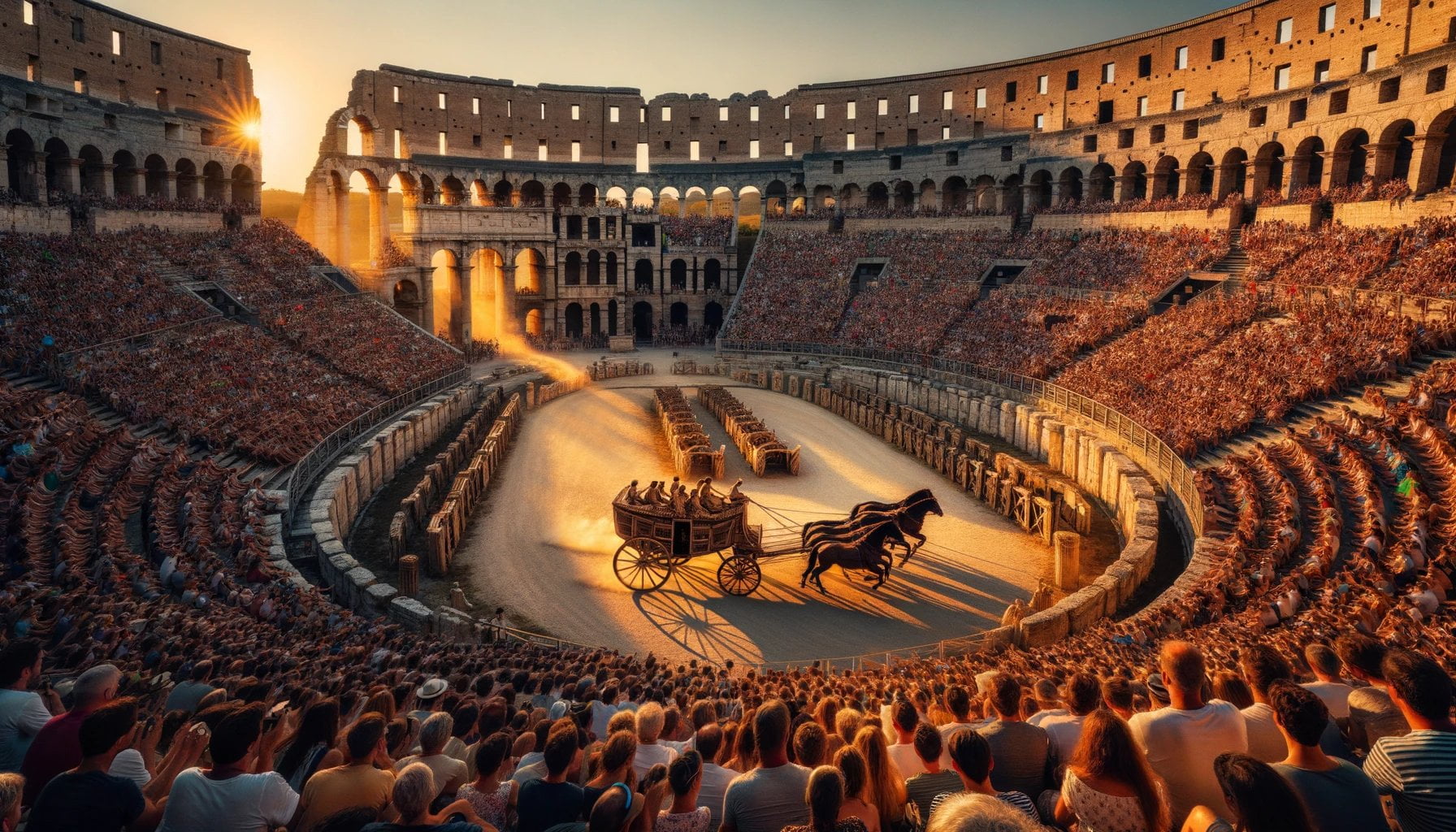
FAQ
Q1: What were the most popular sports in ancient Rome?
A1: The most popular sports in ancient Rome were chariot racing, gladiator fights, boxing, and hoop rolling.
Q2: Where did chariot racing take place in ancient Rome?
A2: Chariot racing took place in massive stadiums like the Circus Maximus.
Q3: Were gladiator fights always fatal?
A3: Gladiator fights were often fatal, as the combatants fought against each other or even wild beasts.
Q4: What were the rules of Roman boxing?
A4: In Roman boxing, players were allowed to strike any part of the body, including the back and genitals.
Q5: Were there any peaceful sports in ancient Rome?
A5: Yes, there were peaceful sports in ancient Rome, such as hoop rolling and the Roman ball game known as Harpastum.
- Winter Weather Advisory Issued for Several Rochester-Area Counties - November 17, 2024
- 1-800-GoFedEx: Your Complete Guide to Navigating FedEx Customer Service - November 17, 2024
- Prime Office Space at 191 North Wacker Drive, Chicago, IL 60606:Leasing Opportunities & Building Overview - November 17, 2024
